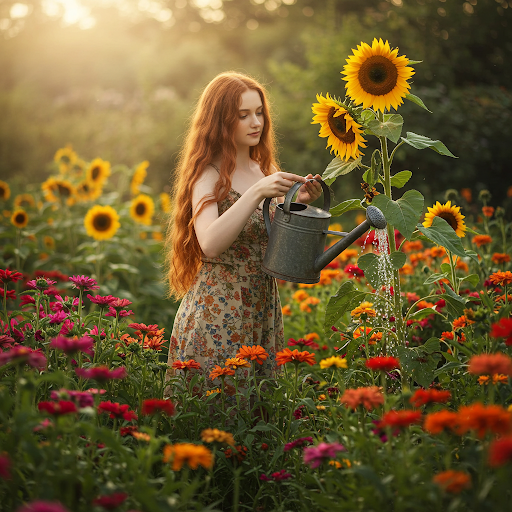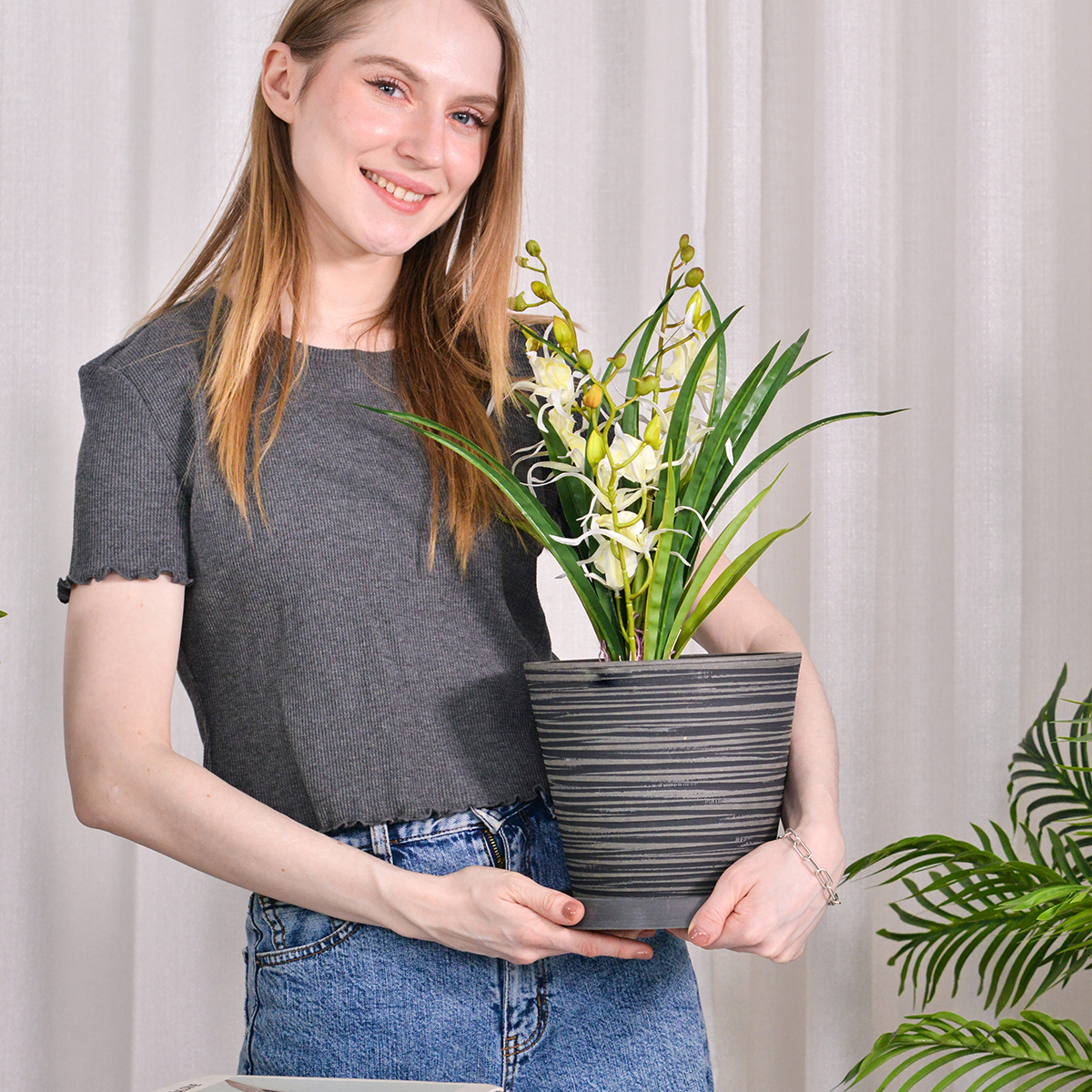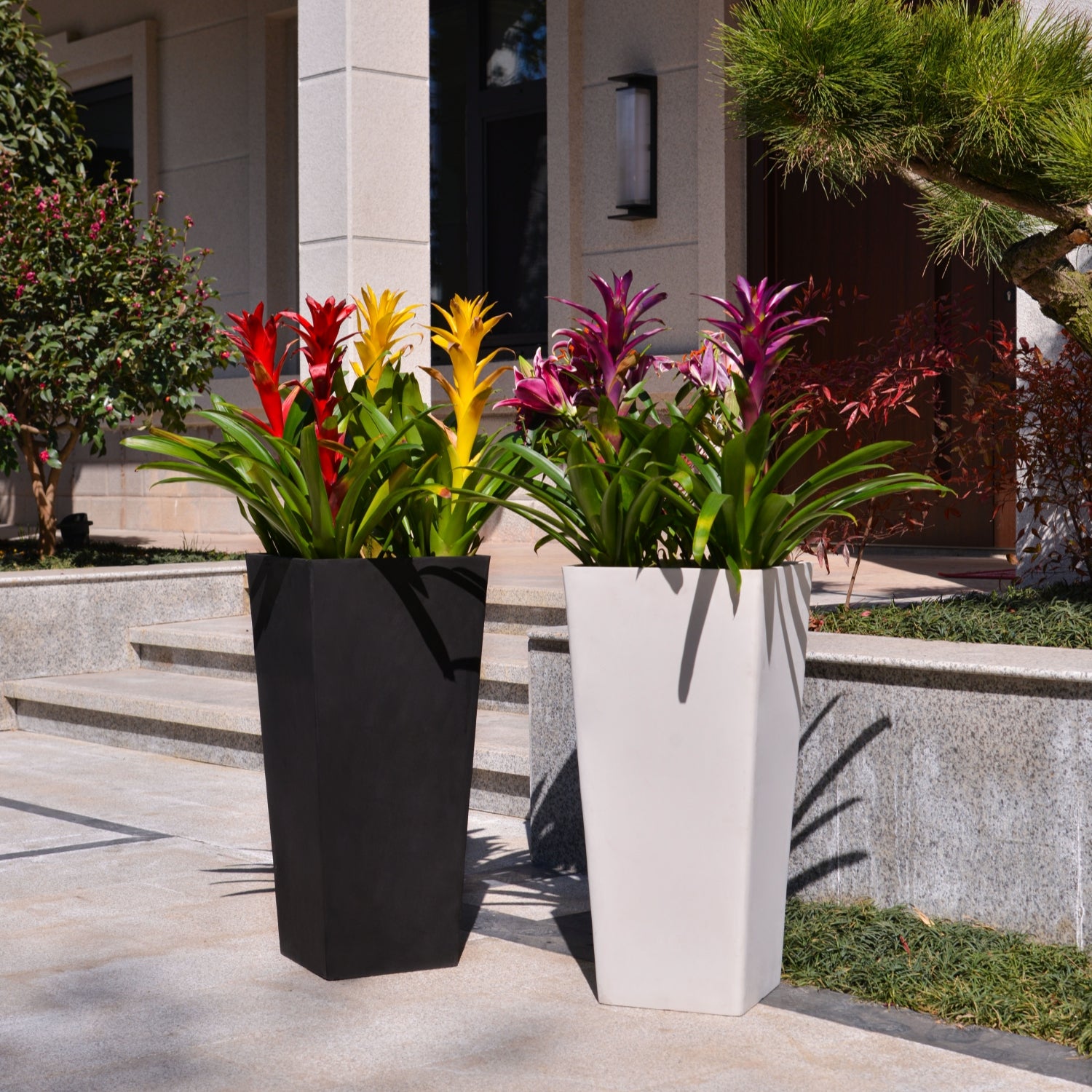The Art of Watering Potted Plants: Achieving the Perfect Balance for Thriving Growth
Watering potted plants might seem like a simple task, but as the saying goes, it takes years of practice to master. The seemingly straightforward advice of “water when the soil is dry” can be surprisingly vague and often leads to overwatering, a common culprit behind the demise of many houseplants. While the amount and frequency of watering depend on numerous factors, understanding the underlying principles can transform you from a novice to a confident waterer. Let’s dive into the art of watering potted plants correctly.

The Importance of the Wet-Dry Cycle:
The key to healthy roots and thriving plants lies in allowing the soil to go through a cycle of being moist and then slightly drying out.
- Benefits of Drying Out: When the soil slightly dries, it allows the roots to breathe and access oxygen. This also encourages the plant to develop a stronger root system as it searches for moisture. However, it’s crucial not to let the soil dry out completely for extended periods, as this can lead to root damage and plant stress.
- Benefits of Thorough Watering: When you do water, thoroughly saturating the soil ensures that all the roots receive the hydration and nutrients they need for healthy growth.
- Avoiding Overwatering: Constantly soggy soil prevents roots from getting the oxygen they need, leading to root rot and ultimately plant death.
For most plants, aim for a wet-dry cycle that occurs roughly every 4-5 days in the spring, every 1-2 days in the summer, and every 2-3 days in the fall. Winter watering will be less frequent.
How to Determine When to Water:
The concept of “dry” isn’t about the soil being bone dry. Here are two simple and effective methods to check soil moisture:
- Method 1: Observe Soil Color and the Finger Test: Look at the surface of the soil. If it appears lighter in color, gently poke your finger about 1 inch (for small to medium pots up to 8 inches in diameter) or 2 inches (for larger pots) deep into the soil. If the top inch or two feels dry while the soil slightly deeper is still a bit moist (not soaking wet), it’s time to water.
- Method 2: Check the Weight: Get a feel for how heavy your potted plant is when the soil is thoroughly watered and when it’s dry. Over time, you’ll be able to tell if it needs watering simply by lifting the pot. This method is best for smaller pots and requires some initial practice using Method 1.
A Helpful Tip for Gauging Watering Intervals:
After watering your plant thoroughly, note how many days it takes for the plant to show the first signs of slight wilting in its new growth due to lack of water. The ideal watering interval for that plant in those conditions will be slightly less than that recorded time. Remember that watering needs will change throughout the year as growing conditions vary.
Recognizing “False” Wilting:
Sometimes, plants might appear wilted even when the soil is moist. This is often due to high temperatures and intense sunlight causing the plant to lose water faster than its roots can absorb it. In such cases, avoid watering. Instead, try to cool the plant down by providing shade, gently misting the leaves (when not in direct sunlight), or moving it to a cooler location. If the plant is wilted with moist soil in cooler, less bright conditions, it could indicate a root issue.
How to Water Correctly:
Here are two effective watering techniques for most potted plants:
- Top Watering Thoroughly: Use a small stream of water and slowly pour it onto the surface of the soil, making sure to saturate the entire soil volume. Continue watering until water starts to drain from the drainage holes at the bottom of the pot. Wait about 5 minutes and then water again until you see drainage. This ensures the entire root ball is moistened.
- Bottom Watering (Soaking): Place the pot in a shallow container filled with about one-third the height of the pot with water. Allow the pot to sit in the water until the top of the soil feels moist or the pot feels significantly heavier, indicating the soil has absorbed enough water. Then, remove the pot and let any excess water drain.
Important Notes on Watering Techniques:
- For most plants that need watering, top watering thoroughly is recommended. However, if the soil is extremely dry and has pulled away from the sides of the pot, bottom watering can help rehydrate it more effectively.
- While bottom watering can be useful, it’s not recommended as the sole watering method long-term, as it doesn’t help flush out accumulated salts and impurities from the soil like top watering does.
- Adding 10-20% coco coir and 10-20% perlite or vermiculite to your potting mix can improve water absorption and drainage. Dry peat moss can be difficult to rehydrate.
- Avoid pouring water directly onto the flowers, as this can cause them to rot and potentially affect the plant’s health.
Seasonal Watering Considerations:
- Summer: Due to high temperatures, water in the early morning or late evening when temperatures are cooler and the temperature difference between the water and the soil is minimal. Avoid watering during the hottest part of the day.
- Winter: Because of lower temperatures, the soil stays moist for longer. Water in the middle of the day when the soil temperature is slightly warmer.
Watering Moisture-Loving Plants:
Plants like azaleas, hydrangeas, and blueberries are often described as preferring moist soil. While they do appreciate consistent moisture, they still benefit from a wet-dry cycle. The key is that their soil can remain slightly more moist and doesn’t need to dry out as much as other plants before watering (water when the soil is just beginning to feel dry).
Watering Drought-Tolerant Plants:
Similarly, drought-tolerant plants don’t need their soil to be completely bone dry (which can lead to root dehydration). They still require a wet-dry cycle, but the soil can be allowed to dry out more significantly between waterings.

Factors Affecting How Quickly Soil Dries Out:
Many factors influence how quickly the soil in a potted plant dries out. Understanding these will help you adjust your watering schedule accordingly:
- Light: Bright light increases the plant’s metabolic rate, leading to higher water demand and faster drying soil.
- Air Circulation: Good ventilation promotes evaporation from the leaves and the soil surface, increasing water needs and drying the soil faster.
- Potting Mix: The type of potting mix significantly affects water retention. Mixes containing peat moss and coco coir tend to hold more moisture, while mixes with perlite and orchid bark drain more quickly.
- Temperature: Higher temperatures (like in the summer) lead to increased evaporation and plant activity, resulting in faster drying soil. Lower temperatures (like in the winter) slow down these processes.
- Pot Material: Unglazed terracotta pots are very porous and allow for significant evaporation, leading to faster drying. Plastic pots, glazed ceramic pots, and glass pots retain more moisture.
- Plant Type: Different plants have different water requirements based on their leaf size, type, and growth rate. For example, plants with large, thin leaves tend to lose water more quickly than succulents with fleshy leaves.
- Pests and Diseases: Plants weakened by pests or diseases may have impaired root function, leading to reduced water uptake and slower drying of the soil. In such cases, you might need to increase the watering interval.
Conclusion: Mastering the Art of Water Management
Watering is more accurately described as water management. While it seems simple, it’s a skill that requires observation, understanding, and adaptation. By grasping the importance of the wet-dry cycle, learning how to assess soil moisture, using proper watering techniques, and considering the various factors that influence soil dryness, you can master the art of watering and ensure your potted plants thrive. Don’t be afraid to experiment and observe your plants – with practice, you’ll develop a “green thumb” for watering!
Planter 6 in W / 8 in W / 12 in W Indoor or Outdoor Plants, Modern Decorative Plant Pots with Drainage Hole, Decorative Flower Pots
By greenship-seo|2025-02-06T13:43:53+00:00January 16, 2025|Categories: Hand-carving Series|Tags: Decorative Flower Pots|
K2-11T
By greenship|2024-08-13T04:21:25+00:00August 13, 2024|Categories: Hand-carving Series|
11TH
By greenship|2024-08-13T02:50:25+00:00August 13, 2024|Categories: Hand-carving Series|
20VD
By greenship|2024-08-13T06:43:41+00:00August 13, 2024|Categories: Hand-carving Series|
k2-21G
By greenship|2024-08-13T06:17:26+00:00August 13, 2024|Categories: Hand-carving Series|
GreenShip 27inch Tall Planters for Porch, Large Outdoor Planter Pots with Drainage Hole
By greenship-seo|2025-04-10T06:27:21+00:00April 7, 2025|Categories: Hand-carving Series|Tags: Decorative Flower Pots|






